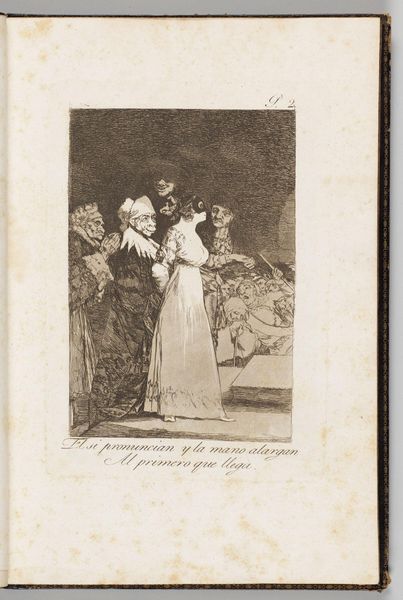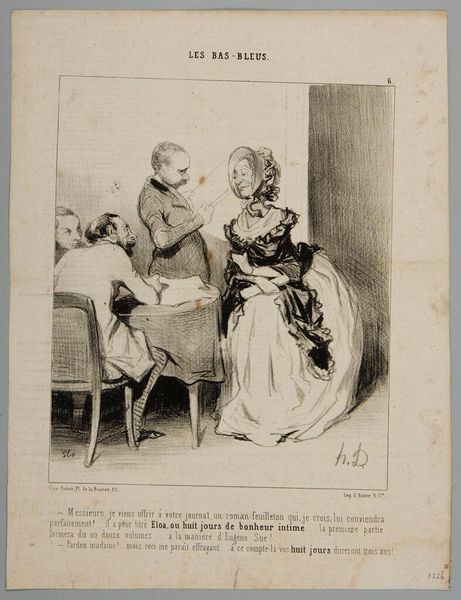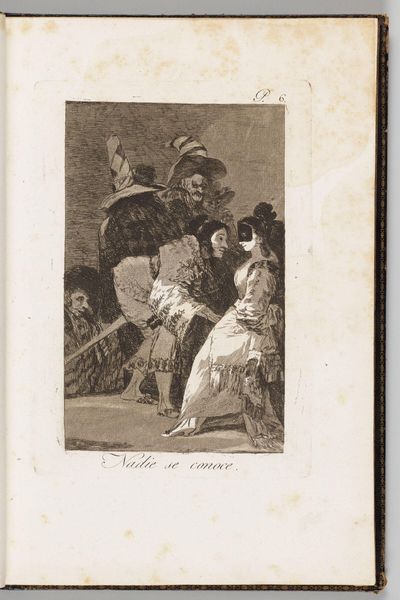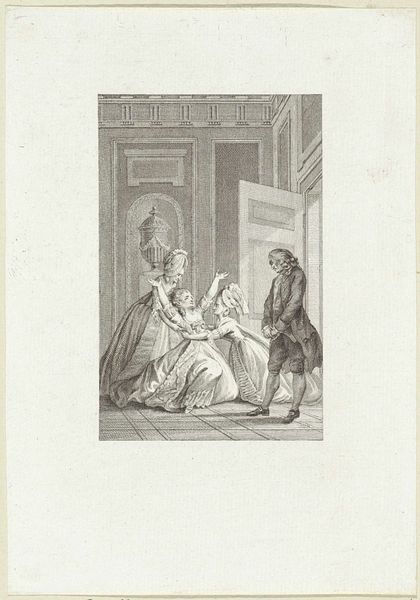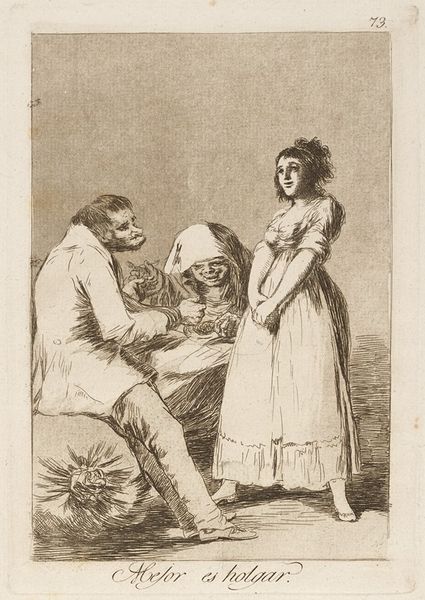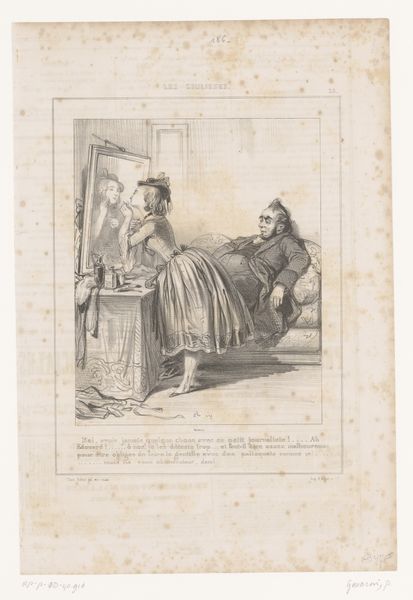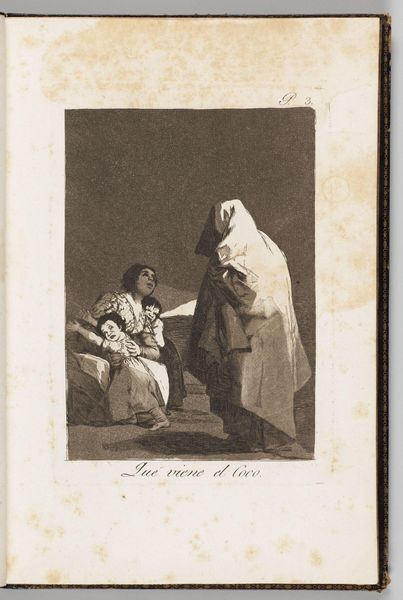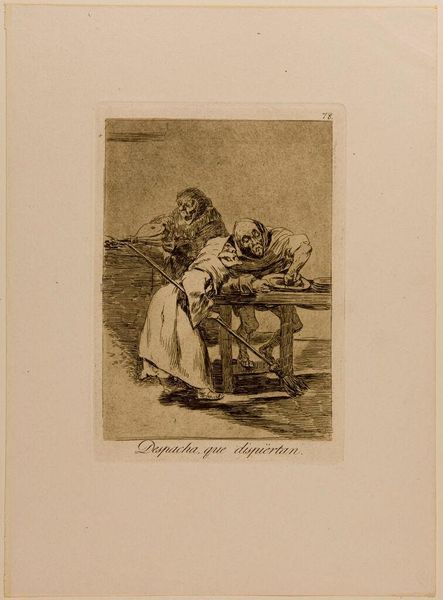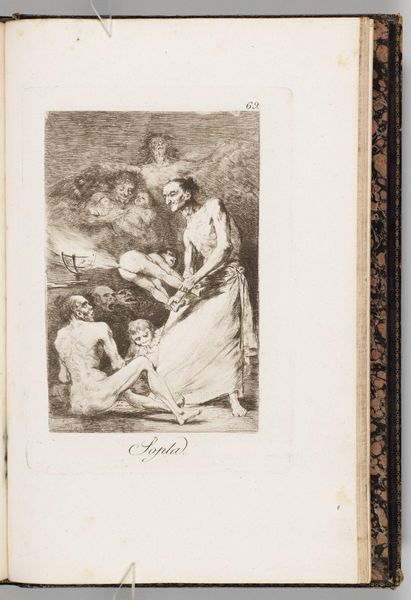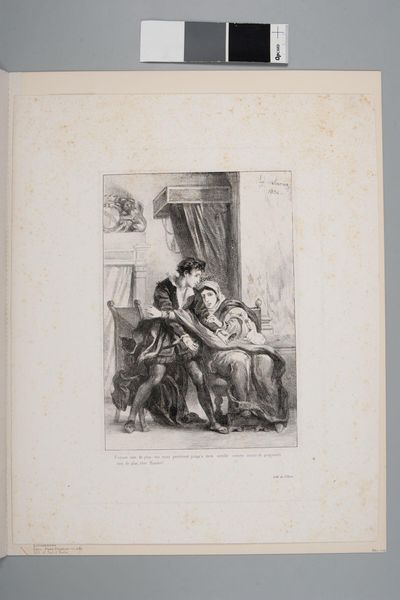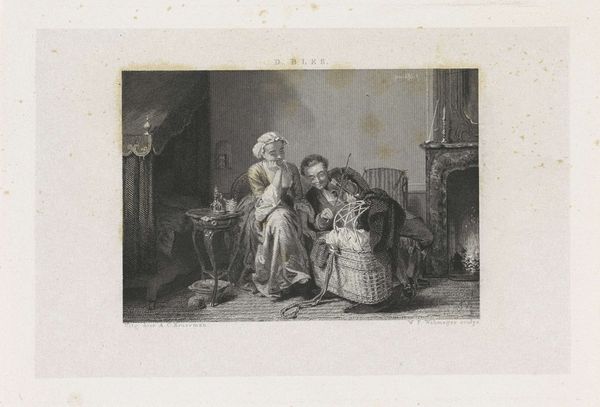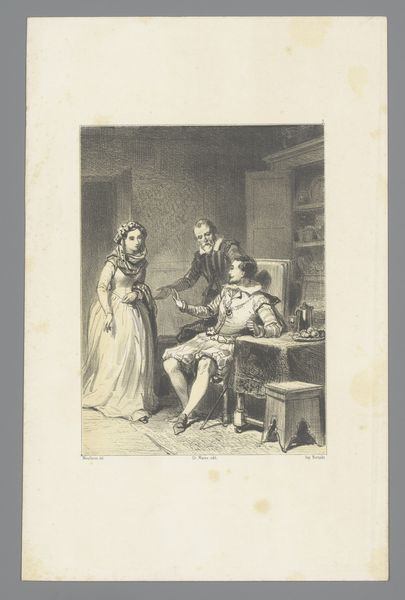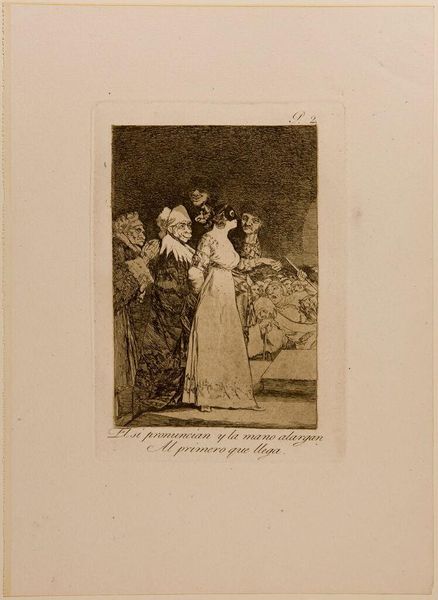
Copyright: CC0 1.0
Curator: This etching by Francisco Goya, titled "It Is Better to Do Nothing," presents an unsettling tableau. What strikes you most? Editor: The tonal range creates such a stark and oppressive atmosphere. Note the strong diagonal lines created by the male figure's posture, which then direct the gaze upwards to the standing woman, dividing the composition somewhat awkwardly. Curator: Goya often used imagery to critique the social mores of his time. The woman's passive pose and the older couple's conniving expressions suggest a commentary on arranged marriages and female exploitation. Editor: The figures are rendered with a harshness that almost caricatures them. Goya's strategic use of line work—notice the cross-hatching—accentuates the ugliness and vice he seems keen to highlight. Curator: Absolutely, and that cross-hatching really brings out that sense of decay, both moral and perhaps even physical. It reminds us that symbols shift in meaning over time. Editor: Yes, the manipulation of light and shadow emphasizes a sense of unease. Perhaps this etching speaks as much about formal relationships as it does about social commentary. Curator: Ultimately, the artwork serves as a potent reminder of the consequences of societal inaction. Editor: Quite right. And it's a fascinating example of Goya's printmaking skill.
Comments
No comments
Be the first to comment and join the conversation on the ultimate creative platform.

